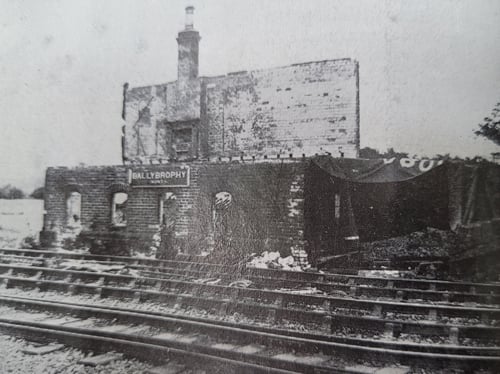Violence and disorder across Ireland one year-on from signing of Treaty
Wexford, 6 December 1922 – A year after the signing of the Anglo-Irish Treaty, Ireland is in a state of disorder.
Violence and intimidation are widespread throughout the country with gunfire on the streets of Dublin and other towns; threats against parliamentarians and journalists are commonplace, and a significant amount of transport infrastructure has been damaged or destroyed.
In Wexford, national solider Private Dooley was killed when a large road mine exploded under the lorry in which he was travelling on the road from Taghmon to Ferrycarrig. The force of the explosion was enough to hurl the lorry a distance of over 20 yards. The two soldiers with him sustained injuries that are not thought to be life-threatening. In another incident in the county, Thomas Doyle died almost immediately after being shot in the neck when his vehicle was ambushed by Irregulars. Speaking at a recent inquest, a senior officer in the area Commandant W.J. Brennan-Whitmore remarked that not a single British soldier was shot in Wexford during the Anglo-Irish War.
In Kilkenny, an Irregular named Patrick McCormack, was killed and three of his comrades were wounded when they were intercepted by national troops near Urlingford.
In Macroom, Co. Cork, a doctor and his driver were wounded when a Red Cross ambulance was ambushed by armed men. The same ambulance had been held up two weeks previously at Carriganima when making its way from Millstreet to Macroom.
A morning train travelling from Cork to Mallow was attacked and partly burned, leaving passengers stranded near Rathduff, from where they had to walk the four miles to Mourneabbey. There they were conveyed to Mallow to pick up the Dublin connection.
In Kerry, a sweep of the county by national troops has resulted in the capture of 77 prisoners and the seizure of a large quantity of grenades and materials used for the manufacture of explosives.
In Dublin, Justice Jonathan Pim, in an address at the Green Street Courthouse, has spoken of the serious increase in crime in recent months. We are, he said, living in very critical times. The number of crimes of one form or another that had been reported over the last two months was 246 compared to 178 for the same period in 1921.
The judge’s remarks come as a young woman was killed in an exchange of gunfire involving national troops and Irregulars on Harcourt Street in the city. Angela Bridgeman, with an address at 23 Ranelagh Road, was a waitress in the Montclare Hotel on Clare Street and was killed after being struck under the eye by a bullet. Three other civilians, including two women, were injured in the same incident.

Photo of a destroyed Ballybrophy train station – caption reads: ‘What some of our southern railways have to put up with' (Image: Irish Life, December 1922)
[Editor's note: This is an article from Century Ireland, a fortnightly online newspaper, written from the perspective of a journalist 100 years ago, based on news reports of the time.]





















